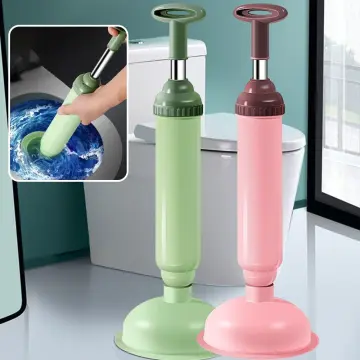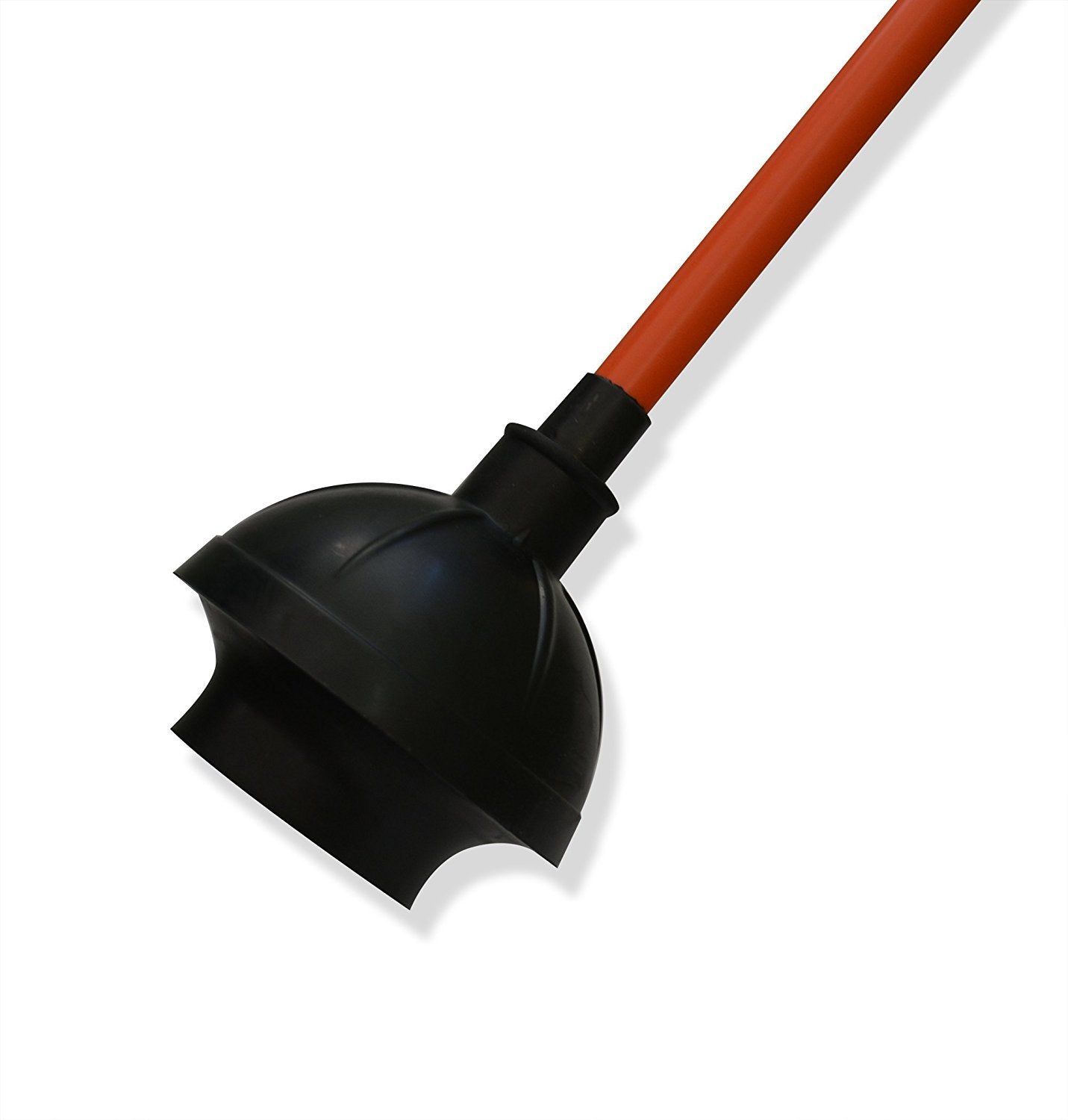The content below relating to How to Unclog Your Sink with a Plunger is immensely enlightening. Read it for your own benefit and figure out what you think of it.

Introduction
Correct maintenance of house drains pipes is important for protecting against obstructions and guaranteeing smooth water circulation. Among the key tools in every property owner's toolkit is the bettor, together with various drainpipe cleansers created to deal with persistent blockages efficiently. This article discovers how to make use of bettors and drainpipe cleansers successfully to keep your drains moving easily.
Area 1: Recognizing Plungers
Kinds of Plungers
There are a number of kinds of bettors readily available, each designed for various sorts of drains and obstructs. The most usual kinds consist of cup bettors, flange bettors, and accordion plungers.
Exactly How Plungers Work
Plungers work with the principle of creating stress and suction to remove clogs. When effectively applied over a drain, they develop a vacuum cleaner that can pull out particles or separate obstructions.
Selecting the Right Bettor
Selecting the ideal plunger relies on the type of drainpipe and the nature of the clog. Cup bettors are optimal for sinks and bathtubs, while flange plungers are much better suited for commodes as a result of their style.
Usual Blunders with Plungers
Preventing these blunders makes certain reliable plunging: improper seal around the drainpipe, inadequate pressure, and unclear bordering debris.
Section 2: Using Plungers Properly
Preparation
Prior to plunging, guarantee the bettor covers the drain completely and develops a limited seal. Clear any visible debris around the drainpipe opening.
Strategy
Beginning with mild plunging motions to build suction. Increase stress progressively, using a steady rhythm. Repeat as required up until the drainpipe gets rid of.
Repairing Tips
If diving does not work, attempt readjusting the seal, applying oil jelly for a much better seal, or utilizing a various kind of bettor.
Section 3: Understanding Drainpipe Cleaning Company
Sorts Of Drain Cleaners
Drain pipes cleansers can be chemical or enzymatic. Chemical cleaners use solid chemicals to dissolve clogs, while chemical cleaners use all-natural enzymes to break down organic matter.
How Drainpipe Cleaners Work
Chemical cleansers react with clogs to dissolve them, while enzymatic cleansers break down natural products like hair and oil without hurting pipes.
Safety and security Factors to consider
Always use handwear covers and eye defense when making use of chemical drainpipe cleaners. Guarantee appropriate ventilation and follow producer instructions thoroughly.
Eco-Friendly Alternatives
Think about using vinegar and baking soda or enzyme-based cleansers for green choices that are much safer for pipes and the setting.
Area 4: Utilizing Drainpipe Cleaning Company Efficiently
Application Techniques
Put chemical cleaners straight into the drainpipe opening. Enable them to benefit the suggested time before purging with warm water. Enzymatic cleaners need to rest over night.
Safety measures
Avoid mixing various sorts of cleaners, as this can create toxic fumes. Never ever utilize chemical cleansers combined with a bettor, as spilling can take place.
Taking Care Of Persistent Obstructions
For consistent blockages, think about utilizing a plumbing serpent or calling a specialist plumbing professional to avoid damage to pipes.
Verdict
To conclude, understanding how to use bettors and drain cleansers successfully is crucial for preserving healthy and balanced pipes systems. By selecting the right devices and techniques, property owners can deal with minor obstructions and protect against significant pipes issues down the line.
How to Use a Plunger to Unclog a Drain
The humble plunger is a simple yet effective tool for breaking clogs in sinks, tubs and toilets. This handy tool is easy to use. You can make the most of its power if you understand how it works. Ready to dive in? Here’s what you need to know.
Safety First!
Never use a plunger with drain chemicals. Water will splash as you work, and the chemicals can spatter, burning skin and eyes. It’s a good idea to use rubber gloves and wear safety goggles when you work on a clog.
Choose the Right Tool for the Job
Plungers come in two different styles. Sinks, bathtubs and showers require a cup plunger. Like its name suggests, the rubber end is shaped like a cup. Use a flange plunger on toilets. These plungers have a rubber funnel extending from the cup. A plunger needs to be big enough to cover the drain.
Ready, Set, Plunge!
Coat the rim: Coat the plunger rim with petroleum jelly. This helps make a better seal.
Block outlets: Hold a wet rag over nearby outlets such as the overflow vent or the drain in a second sink.
Release air: Insert the plunger at an angle into the water. Water will displace air in the cup. A water-filled cup is more forceful than one filled with air.
Keep the plunger upright: Hold the plunger perpendicular to the drain. Use fast, forceful strokes, but make the first stroke gentle. The first stroke can create a splash if the cup still contains air. Thrust the plunger 15 to 20 times.
Snap off the plunger: The final stroke should be a strong upward motion that ends when the plunger snaps off the drain.
Repeat the process: you may need to repeat this sequence several times. When the water drains away, your work is done. High-five! https://plumbernw.com/blog/how-to-use-a-plunger-to-unclog-a-drain/

Application Techniques
Put chemical cleaners straight into the drainpipe opening. Enable them to benefit the suggested time before purging with warm water. Enzymatic cleaners need to rest over night.
Safety measures
Avoid mixing various sorts of cleaners, as this can create toxic fumes. Never ever utilize chemical cleansers combined with a bettor, as spilling can take place.
Taking Care Of Persistent Obstructions
For consistent blockages, think about utilizing a plumbing serpent or calling a specialist plumbing professional to avoid damage to pipes.
Verdict
To conclude, understanding how to use bettors and drain cleansers successfully is crucial for preserving healthy and balanced pipes systems. By selecting the right devices and techniques, property owners can deal with minor obstructions and protect against significant pipes issues down the line.
How to Use a Plunger to Unclog a Drain
The humble plunger is a simple yet effective tool for breaking clogs in sinks, tubs and toilets. This handy tool is easy to use. You can make the most of its power if you understand how it works. Ready to dive in? Here’s what you need to know.
Safety First!
Never use a plunger with drain chemicals. Water will splash as you work, and the chemicals can spatter, burning skin and eyes. It’s a good idea to use rubber gloves and wear safety goggles when you work on a clog.
Choose the Right Tool for the Job
Plungers come in two different styles. Sinks, bathtubs and showers require a cup plunger. Like its name suggests, the rubber end is shaped like a cup. Use a flange plunger on toilets. These plungers have a rubber funnel extending from the cup. A plunger needs to be big enough to cover the drain.
Ready, Set, Plunge!
Coat the rim: Coat the plunger rim with petroleum jelly. This helps make a better seal. Block outlets: Hold a wet rag over nearby outlets such as the overflow vent or the drain in a second sink. Release air: Insert the plunger at an angle into the water. Water will displace air in the cup. A water-filled cup is more forceful than one filled with air. Keep the plunger upright: Hold the plunger perpendicular to the drain. Use fast, forceful strokes, but make the first stroke gentle. The first stroke can create a splash if the cup still contains air. Thrust the plunger 15 to 20 times. Snap off the plunger: The final stroke should be a strong upward motion that ends when the plunger snaps off the drain. Repeat the process: you may need to repeat this sequence several times. When the water drains away, your work is done. High-five! https://plumbernw.com/blog/how-to-use-a-plunger-to-unclog-a-drain/

I hope you liked our part on Here's How to Correctly Use a Toilet Plunger. Thanks for taking a few minutes to read through our blog. Are you aware of anybody else who is in the market for the subject? Do not hesitate to share it. Thanks a bunch for being here. Return soon.
Schedule Appointment